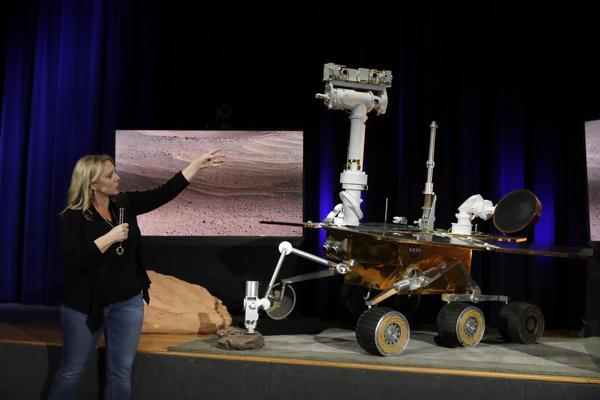NASA bids adieu to Mars rover that kept going and going and going
LOS ANGELES - Reuters


A remarkably durable NASA rover designed to traverse the surface of Mars for three months has stopped communicating with Earth after 15 years of service, officials said on Feb. 13, ending a mission that astounded and gratified the U.S. space agency.
Engineers lost contact with the solar-powered vehicle, dubbed Opportunity, on June 10 of last year during an immense dust storm that encircled Mars. Since then, NASA officials made numerous attempts to reach the six-wheeled rover, which is about the size of a golf cart.
Opportunity's equipment may have been compromised by the dust storm that struck while the rover was at a site called Perseverance Valley, officials said.
The vehicle was built to drive six-tenths of 1 km on the surface of the Red Planet, but ended up covering 45 km and lasting longer on Mars than any other robot.
On Feb. 12 engineers sent a transmission from a California-based antenna in a last ditch attempt to revive the rover, but heard nothing back, said Thomas Zurbuchen, associate administrator for NASA's Science Mission Directorate.
"It is, therefore, that I am standing here with a sense of deep appreciation and gratitude that I declare the Opportunity mission as complete," Zurbuchen said during an online video presentation at the Jet Propulsion Laboratory in Pasadena, California. "I stand here surrounded by the team, and I have to tell you, it's an emotional time."
As Opportunity explored craters on Mars, it gathered important evidence to demonstrate that the planet in the ancient past was wet and warm enough to possibly sustain life, NASA said. Those included discovering white veins of the mineral gypsum, an indication of water moving through underground fractures.
Opportunity landed on Mars in January 2004, a few weeks after its rover twin Spirit, which ended its mission in 2010.
Another NASA rover called Curiosity, which arrived on Mars in 2012, continues its work on the Martian surface.
And NASA's InSight spacecraft, the first robotic lander designed to study the deep interior of a distant world, touched down safely on the surface of Mars in November with instruments to detect planetary seismic rumblings never measured anywhere but Earth.
InSight and the next Mars rover mission, scheduled for 2020, are both seen as precursors for eventual human exploration of Mars, an objective that NASA Administrator Jim Bridenstine has said might be achieved as early as the mid-2030s.
